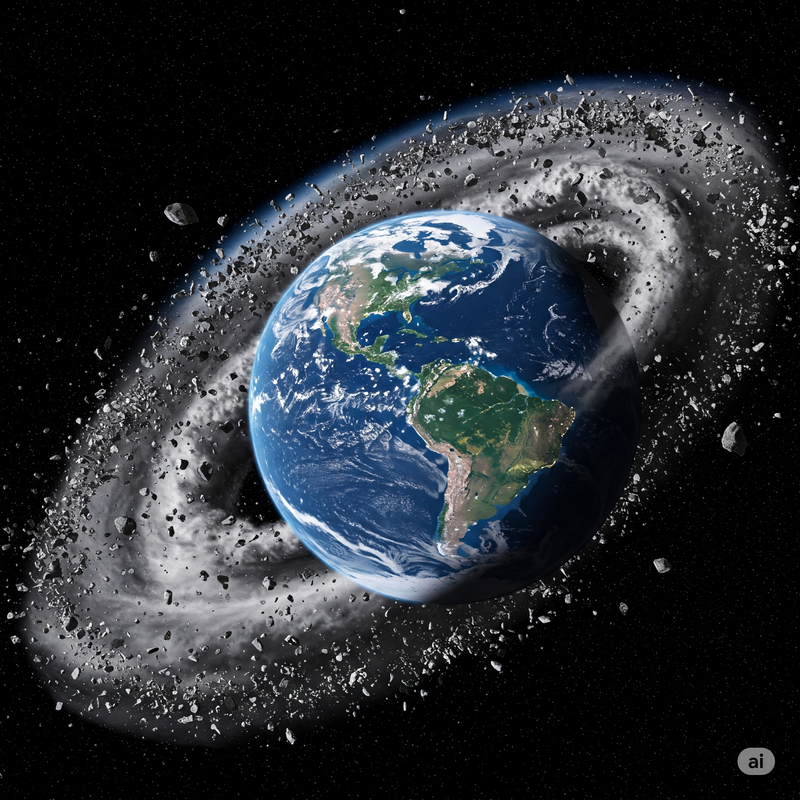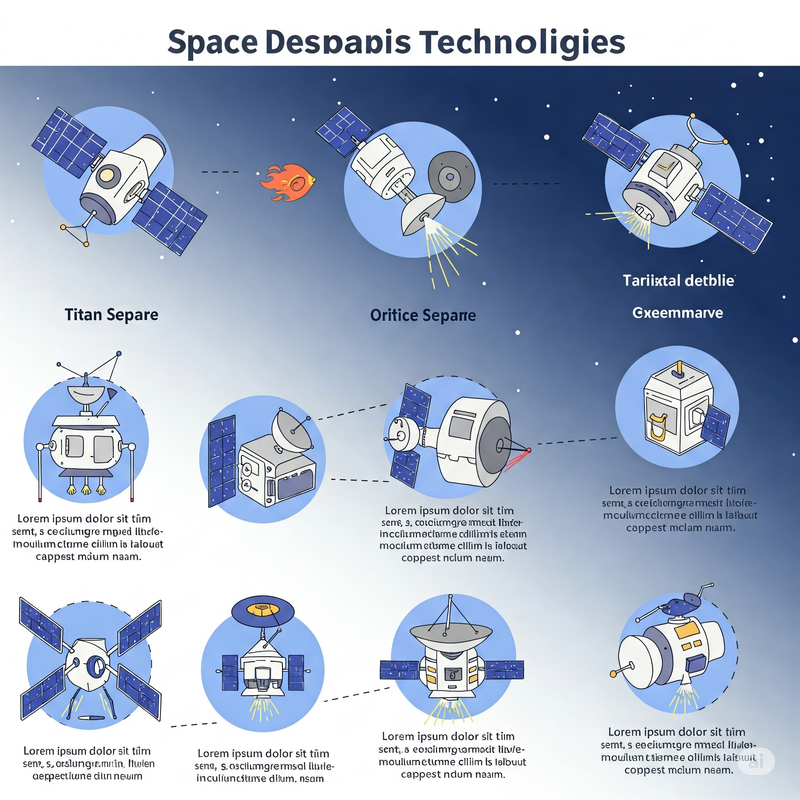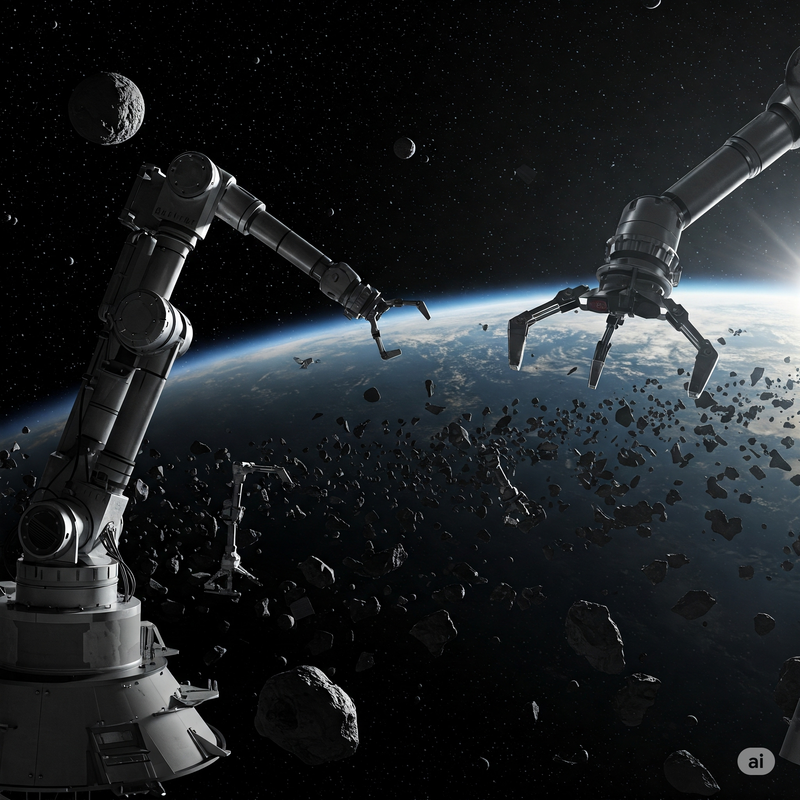Orbital Graveyard: The Looming Threat of Space Debris and How We Can Clean It Up
Orbital Graveyard: The Looming Threat of Space Debris and How We Can Clean It Up
Imagine a seemingly serene view of our beautiful blue planet from space. Now, picture an invisible, fast-moving junkyard surrounding it – millions of pieces of artificial objects, collectively known as space debris or orbital debris. This isn't science fiction; it's a growing environmental challenge above our heads, posing a significant threat to our operational satellites, the International Space Station, and our future endeavors beyond Earth. From defunct satellites and discarded rocket stages to fragments from violent collisions, this orbital junkyard is becoming increasingly hazardous.

What Exactly is Space Debris? The Orbital Junkyard
So, what exactly constitutes space debris? It's a broad term encompassing any artificial object in orbit that no longer serves a useful purpose. This includes:
- Defunct Satellites: Old, non-functional spacecraft that continue to orbit Earth.
- Rocket Upper Stages: The discarded parts of rockets that launched satellites into space.
- Fragmentation Debris: The result of explosions (often due to leftover fuel) and collisions between orbiting objects. Even tiny fragments, traveling at orbital speeds of thousands of kilometers per hour, can inflict catastrophic damage.
- Mission-Related Debris: Smaller items like tools dropped by astronauts during spacewalks.
The size of this orbital junk varies drastically, from microscopic paint flecks to massive, bus-sized rocket bodies. Heavily trafficked regions like Low Earth Orbit (LEO), home to the ISS and many Earth observation satellites, and Geostationary Orbit (GEO), where many communication satellites reside, are particularly congested. Historical events, such as anti-satellite (ASAT) weapon tests and accidental satellite collisions, have significantly exacerbated the space debris problem.

The Chain Reaction: Kessler Syndrome and the Doomsday Scenario
The most concerning aspect of the increasing space debris population is the potential for the Kessler Syndrome, also known as the Kessler effect. Proposed by NASA scientist Donald Kessler, this scenario describes a self-sustaining cascade of collisions. As the density of orbital debris increases, collisions become more frequent. Each collision generates even more fragments, leading to a higher probability of further impacts. This chain reaction could eventually render certain orbital regions virtually unusable for decades, if not centuries, severely hindering satellite services we rely on daily (communication, GPS, weather forecasting, Earth observation) and making future space exploration incredibly risky. Preventing the Kessler Syndrome is a primary motivation behind the urgent need to address space junk.

Ways to Remove Space Debris: Active Debris Removal (ADR) Initiatives
Scientists and engineers worldwide are developing innovative technologies for active debris removal (ADR) to tackle the existing orbital debris problem. Here are some of the most promising approaches:
- Robotic Capture: Specialized spacecraft equipped with sophisticated robotic arms aim to physically capture large, defunct satellites and rocket bodies. These "space уборщики" (space cleaners) would then de-orbit the debris, causing it to burn up safely in Earth's atmosphere. Missions and concepts like the European Space Agency's ClearSpace-1 are examples of this approach.
- Nets: Large, deployable nets are being designed to ensnare multiple pieces of smaller space junk simultaneously. The captured debris, along with the net, would then be guided towards a controlled atmospheric reentry. The challenge lies in the precise and controlled deployment and retrieval of these nets in the harsh space environment.
- Harpoons and Tethers: Another method involves launching a harpoon to firmly attach to a piece of orbital debris. Once secured, a tether, potentially an electrodynamic tether, could be deployed. Electrodynamic tethers use Earth's magnetic field to generate a drag force, gradually slowing down the debris and causing it to lose altitude.
- Drag Augmentation (Sail Deployment): For satellites nearing the end of their operational life, deploying large, lightweight sails can significantly increase their atmospheric drag. This accelerates their natural de-orbiting process, preventing them from becoming long-term space debris.
- Laser Ablation: Both ground-based and space-based lasers are being explored to nudge smaller pieces of space junk. By precisely targeting the debris with laser pulses, a small amount of material is vaporized, creating a thrust that alters its orbit, eventually leading to atmospheric reentry. This method is particularly challenging due to the need for accurate tracking and high-power lasers.
- Ion Beam Shepherding: This more futuristic concept involves using charged particle (ion) beams to gently push space debris without physical contact. The subtle force exerted by the ion beam could nudge debris into lower orbits. This technology is still in early stages of development.
- Magnetic Capture: For space debris with magnetic components, specialized spacecraft equipped with strong magnets could capture and maneuver them for de-orbiting.
Each of these active debris removal methods presents its own set of technical hurdles, costs, and safety considerations. The legal and political frameworks for implementing these technologies also need careful consideration.
Preventing Future Debris: Mitigation is Key
While cleaning up existing space junk is crucial, preventing the creation of new orbital debris is equally important. International guidelines and responsible spaceflight practices are essential:
- Designing satellites with end-of-life de-orbiting capabilities.
- Passivation of spacecraft and rocket stages by depleting residual fuel and venting pressurized systems to prevent accidental explosions.
- Implementing improved collision avoidance systems and sharing tracking data.
- Adopting responsible launch practices and minimizing the release of mission-related debris.
International cooperation and strict adherence to these mitigation strategies are vital for ensuring the long-term sustainability of our activities in space.
Conclusion: Securing Our Orbital Future
The growing threat of space debris is a serious environmental challenge that demands our attention and action. Just as we strive to protect our planet, we must also be responsible stewards of the orbital environment. The innovative technologies being developed for active debris removal, coupled with proactive mitigation strategies, offer a glimmer of hope for a safer and more sustainable future in space. The ability to explore and utilize the cosmos for the benefit of humanity depends on our commitment to cleaning up our orbital graveyard.
Explore More:
- The Future of Nuclear Fusion: Unlimited Clean Energy?
- AI Weather Control: Can We Predict the Unpredictable?
Contact Author:
More Information:
Enjoyed this post? Share it with your friends!
Disclaimer: This blog post provides general information about space debris and potential removal technologies. For specific technical details and the latest research findings, please refer to reputable scientific and space agency resources.
Comments
Post a Comment